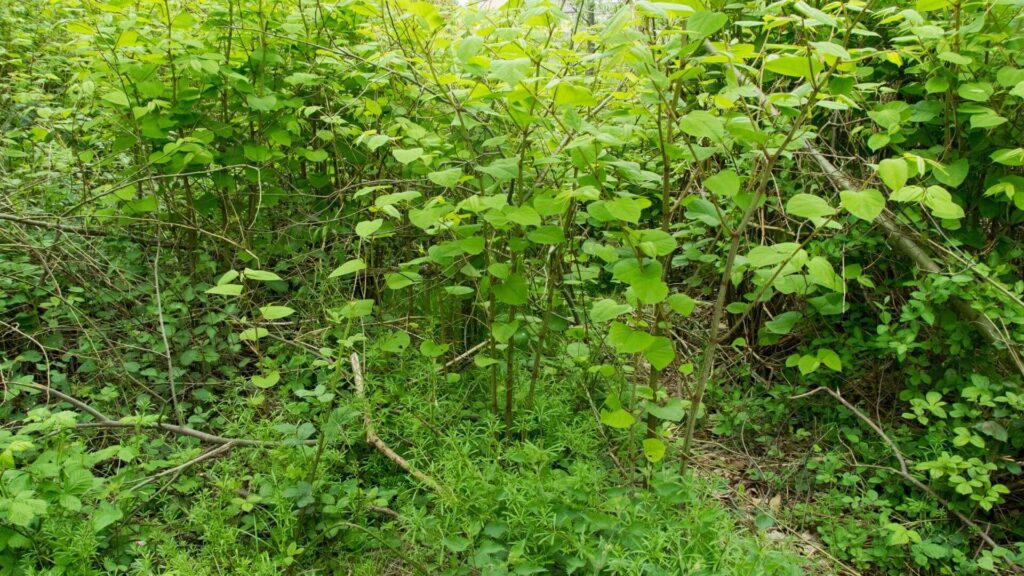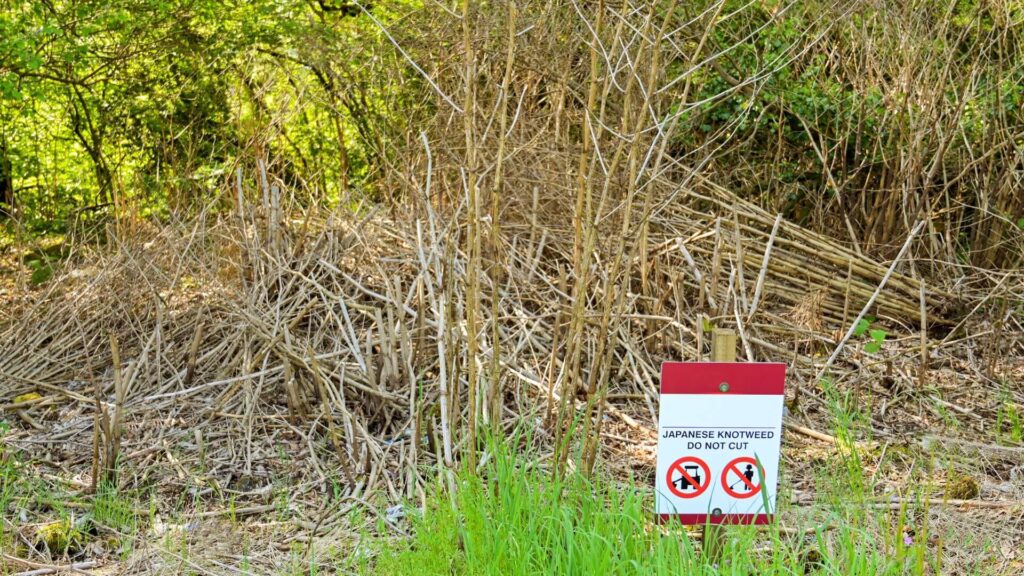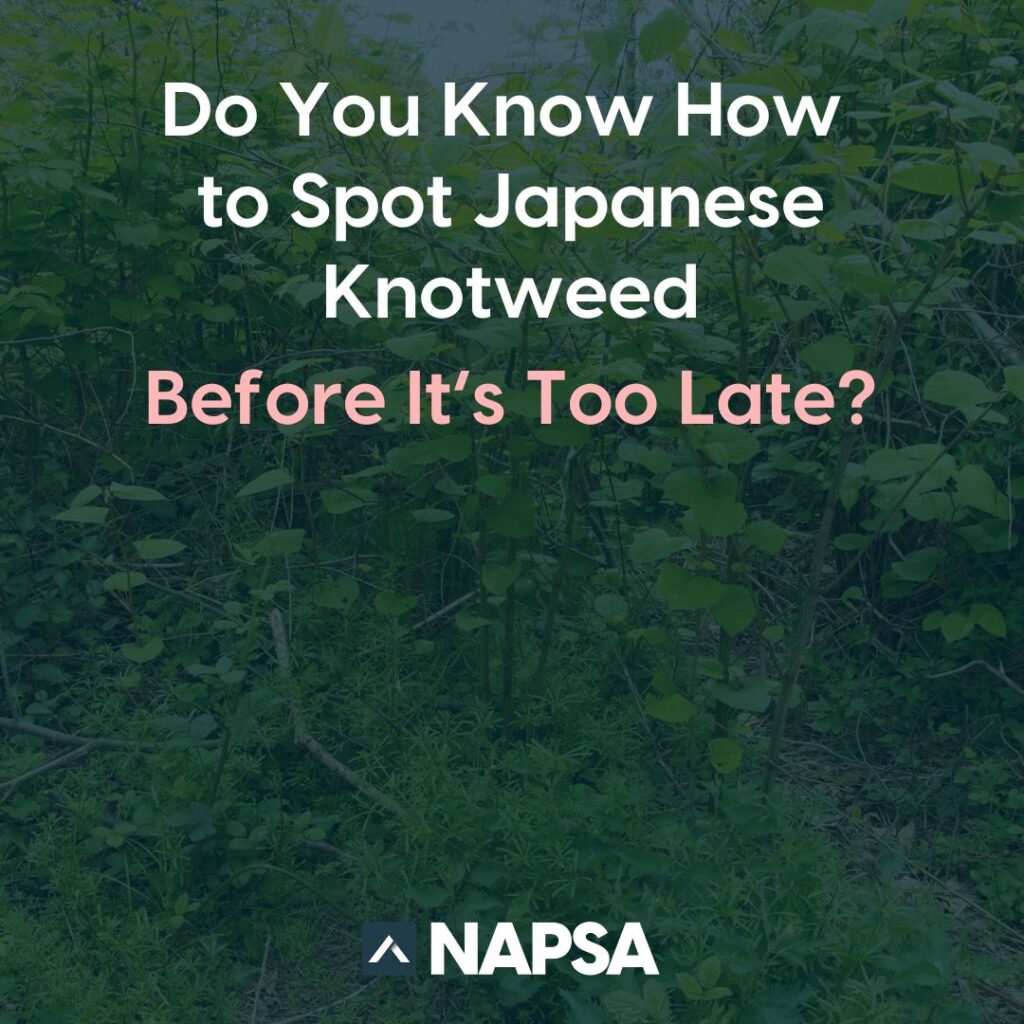Japanese knotweed is every property investor’s nightmare. This invasive plant can seemingly appear out of nowhere, causing costly structural damage to buildings and drastically reducing a property’s value.
Yet, it’s not just investors who need to know how to identify it. For property sourcers and deal packagers, understanding how to spot knotweed early can protect their clients from making poor investments.
The challenge is spotting Japanese knotweed, as it’s not always straightforward — especially in the winter months when it’s often cleverly concealed or mistaken for something else.

Why Identifying Japanese Knotweed Is Crucial in Property Investment
Japanese knotweed might look harmless at first glance, but it comes with a host of serious issues for property investors.
Key Challenges Posed by Japanese Knotweed
- Structural Damage: Its roots, known as rhizomes, are powerful enough to grow through concrete, walls, foundations, and drains.
- Reduced Property Value: Properties with knotweed can lose a significant amount of their market value—up to 15%!
- Transactional Risks: Failure to identify knotweed can lead to delays, additional costs, or even collapsed sales. Sellers are legally required to declare the presence of knotweed on the Law Society’s TA6 form, but all too often, issues emerge after a transaction.
- Costly Removal: Eradicating knotweed is a time-consuming and expensive process unless managed by professionals.
If you’re in property sourcing or deal packaging, identifying Japanese knotweed early is critical to protecting your reputation and ensuring you’re offering sound investment opportunities.
How to Spot Japanese Knotweed (Even in Winter)
Japanese knotweed is most recognisable in spring and summer, but during winter, identifying it is far trickier. Sellers may attempt to conceal it using patios, decking, or even concrete. However, there are ways to uncover its telltale signs all year round.
Winter Indicators of Japanese Knotweed:
- Tall, Hollow Canes: The stems turn a rich chestnut brown in winter and often remain standing unless cleared.
- Zig-Zag Stems: Even in its dormant state, knotweed has distinctive zig-zag-shaped stems that are still visible.
- Crown-like Rhubarb Structures: For mature plants, crown-shaped remnants sit on the surface of the soil.
- Emerging Shoots (Early Spring): Keep an eye out for red or purple asparagus-like shoots that quickly transform into green bamboo-like stems.

Other Red Flags to Watch For:
- Large areas covered with concrete, decking, or pathways where the plant could be concealed.
- Sudden vegetation growth around the edges of patios or paving.
- Sellers reluctant to answer questions about the garden or outdoor areas.
What to Do if You Spot Japanese Knotweed
If you think you’ve identified Japanese knotweed, don’t panic. Here are the steps you can take to protect yourself or your clients from potential headaches.
For Property Investors:
- Request a Specialist Survey: Commission a Japanese knotweed survey from a professional who offers a warranty for removal.
- Negotiate the Price: Use the presence of knotweed as leverage to negotiate a lower purchase price, accounting for removal costs.
- Check Insurance Policies: Investigate indemnity insurance policies to cover any future issues related to knotweed.
For Property Sourcers and Deal Packagers:
- Flag Concerns Early: Inform your client as soon as you suspect the presence of knotweed, and recommend a specialist survey.
- Engage with RICS Surveyors: Ensure the surveyor involved in the process is vigilant and experienced in identifying knotweed.
- Be Transparent: Communicate openly about the risks and potential costs involved in dealing with knotweed.
The Environmental Impact of Japanese Knotweed
Beyond just the financial implications, Japanese knotweed poses significant ecological risks. It spreads quickly, outcompeting native plants and reducing biodiversity.
For property investors aiming to operate sustainably, addressing knotweed isn’t just about finances—it’s a way to demonstrate environmental responsibility.
How to Protect Your Property Investment Strategy
Knowing how to identify and deal with Japanese knotweed is key to protecting your investments and ensuring long-term profitability. Whether you’re viewing properties for yourself or sourcing them for others, remember that early detection is everything.
Around 5% of UK properties are affected by knotweed, so staying one step ahead will give you a competitive edge.
Pro Tip: Remind clients that professional removal of knotweed often spans several growing seasons. This means it’s vital to have a specialist warranty in place to avoid recurring issues. And remember, knotweed will not be eradicated by simply concreting over it or using regular weedkiller!
If you’re serious about enhancing your skills in property sourcing, staying educated about issues like Japanese knotweed is essential. With this knowledge, you’ll not only protect investments but also bolster your professional reputation.
Are you dealing with Japanese knotweed concerns, or do you want to learn more about protecting property portfolios? Get in touch with our team about NAPSA Membership support for your business.




